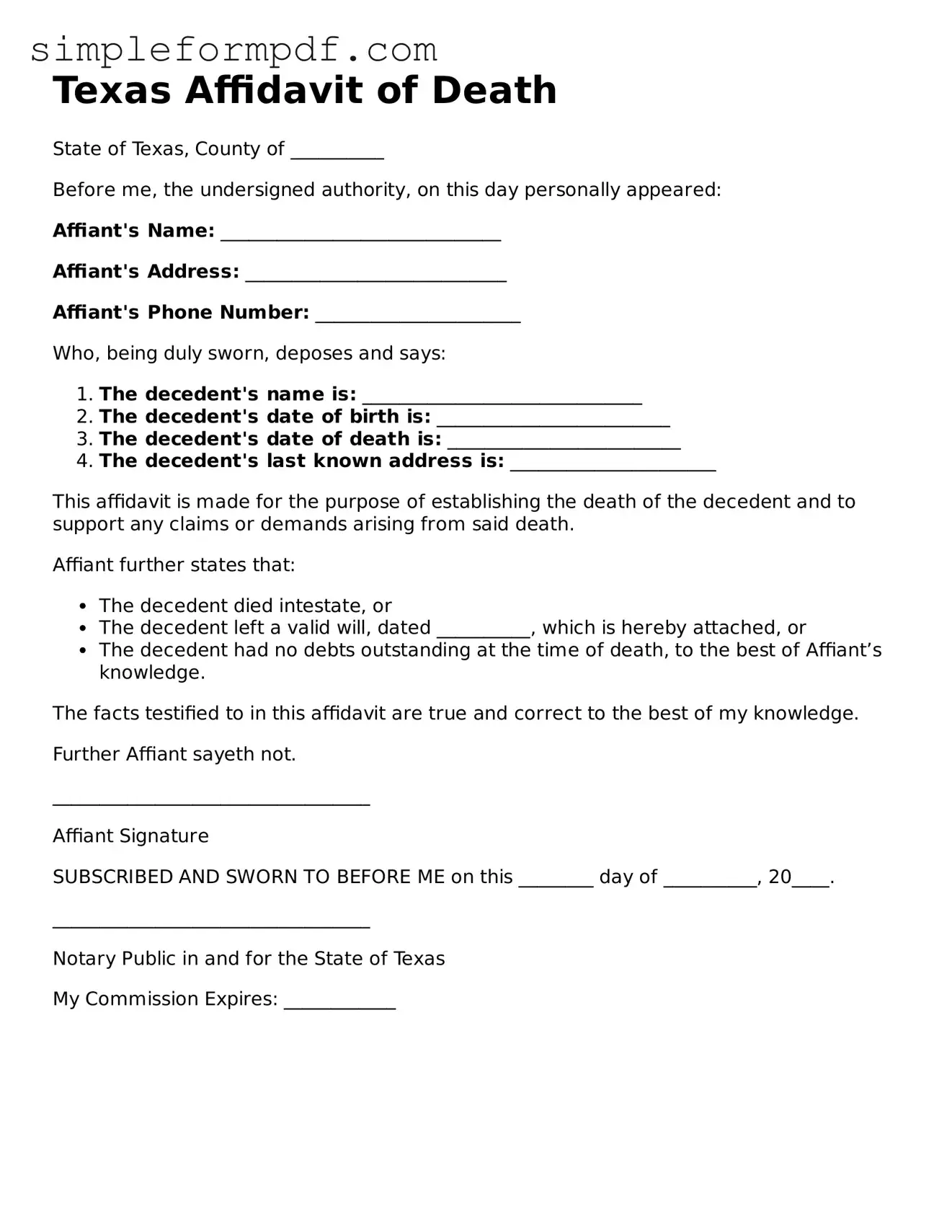Texas Affidavit of Death
State of Texas, County of __________
Before me, the undersigned authority, on this day personally appeared:
Affiant's Name: ______________________________
Affiant's Address: ____________________________
Affiant's Phone Number: ______________________
Who, being duly sworn, deposes and says:
- The decedent's name is: ______________________________
- The decedent's date of birth is: _________________________
- The decedent's date of death is: _________________________
- The decedent's last known address is: ______________________
This affidavit is made for the purpose of establishing the death of the decedent and to support any claims or demands arising from said death.
Affiant further states that:
- The decedent died intestate, or
- The decedent left a valid will, dated __________, which is hereby attached, or
- The decedent had no debts outstanding at the time of death, to the best of Affiant’s knowledge.
The facts testified to in this affidavit are true and correct to the best of my knowledge.
Further Affiant sayeth not.
__________________________________
Affiant Signature
SUBSCRIBED AND SWORN TO BEFORE ME on this ________ day of __________, 20____.
__________________________________
Notary Public in and for the State of Texas
My Commission Expires: ____________
